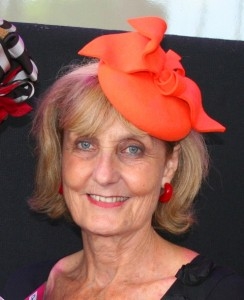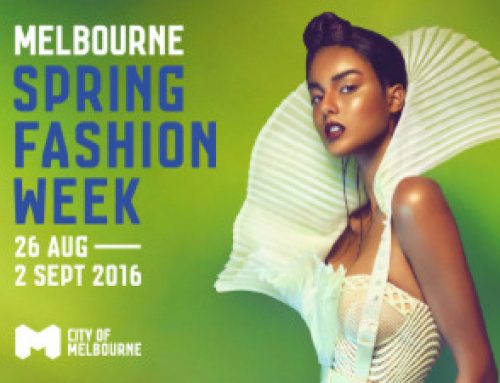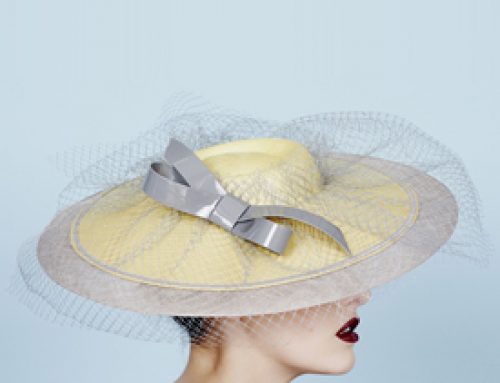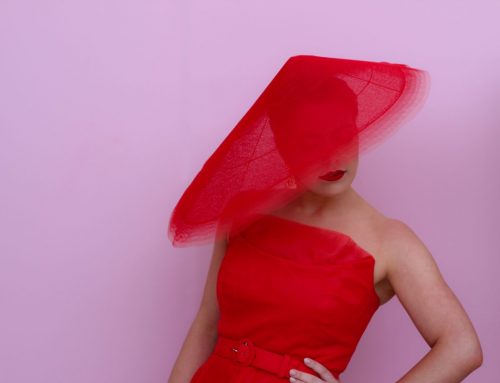I had a mother who was a talented home dressmaker. As a young girl in the 1950s I would watch her making evening dresses and small hats to match. I would make dolls outfits from her off cuts. I graduated to making my own clothes. In the late 1970s, when I was a stay-at-home mother to three little boys, I decided to formally pursue my interest in design and fashion. I enrolled at the Canberra Technical College. Millinery was their final course. I immediately knew this was for me. Intensely artistic; an accurate expression of contemporary fashion but with lots of history; the discipline of the market-place. Within six months I had lots of people wanting to buy my creations. What a thrill that was.
Where did you learn millinery?
I trained at the Canberra Institute of Technology. In1990 I enrolled in Certificate III in millinery. The course consisted of four units. Bridal, Winter, Summer and Hand Tailored Headwear. I was lucky to encounter a couple of experienced, knowledgeable and enthusiastic millinery teachers. It took three years to complete. I then enrolled in Certificate IV. My main course project was a theatrical collection. I have also attended theatrical headwear workshops led by Jean Carroll.
How long have you been a milliner for? Where else did you work?
I have been a milliner now for 17 years. Prior to taking up millinery and after completing my fashion certificates, I reworked and extended some designs I had developed for my boys’ skate-board clothes, into a skate clothes label (Rad Rags), working from my new studio. For 3 years I provided a range of skate clothing to 4 shops; in Canberra, Sydney and Melbourne. But my heart wasn’t in it…
Where do you get inspiration for your designs?
I draw inspiration from my favourite eras; the 1920s and 30s. They were dynamic, confident, changing times. The use of felts and straws pleated, twisted and shaped has always fascinated me. I love texture. I see it everywhere. The sharp changes of seasons here in my home town in the mountains are also an inspiration, especially the colours and shapes of leaves. I enjoy adding to the theatre of the public ceremonies that often take place here too.
What has been your most enjoyable commission?
Perhaps it was my hat for the “Dressed To Kill” exhibition held at the Australian National Gallery in 1993. The exhibition was developed by the ANG to commemorate 100 years of fashion. I was commissioned to make two hats, including a small 30s style black velour felt to match a 1930s Molyneux black wool dress, which had the ends of the sleeves and the wrists become gloves, opening at the wrist with covered buttons. I had been shown all the dresses for the exhibition months before and choose which couple of outfits I would like to design hats for. As expected, there were lots of bureaucratic meetings and discussions. But finally, there was that famous dress, on display, with my new hat setting it off.
But it was also pretty exciting to see on TV, the Governor General’s wife at Camilla’s wedding, wearing one of the hats I’ve made for her…
How do you describe your style of hats?
My hats will sometimes be art; often they’re fun; but they will always be fashionable, well made and wearable.
Who do you make hats for?
I make hats for all occasions: racing carnivals, brides/weddings, parades, funerals. My specialty in the winter months are my hand felted wool cloches, berets and small hats. They range from informal fun to high-fashion headwear. Often teamed with my nuno-felted scarves, they’re popular with clients from colder climes, including from the northern hemisphere. From time to time I am commissioned to make theatrical pieces. For example, I have been commission by the Australian National Museum to make “ethnic’ hats for hands-on educational kits for exhibitions.
What materials and techniques do you favor?
I favour textured straws, velour felts and merino wool. I enjoy hand-blocking and sculpting in these materials. During Canberra’s winter, I particularly enjoy using materials/techniques born of the Southern Tablelands – the fine-wool capital of Australia. I am fascinated and taken by integrated process of starting with a ball of carded fleece and personally turning it into a beautiful hat. I have built on my brief training in this technique with lots of personal research and experimentation.
Any other interests?
I also enjoy teaching millinery. I run regular workshops with different groups of people here in Canberra. These include working in association with textile schools and women’s groups from different areas of the city. For example, one group I enjoy teaching is a group of women from French speaking countries – Canberra’s Accueil Club. They sometimes forget I don’t speak French, but they are diverse and interesting women.
.









